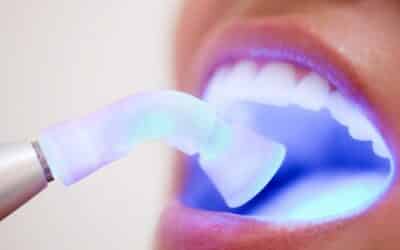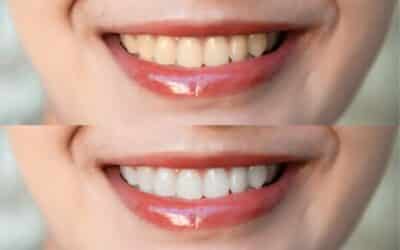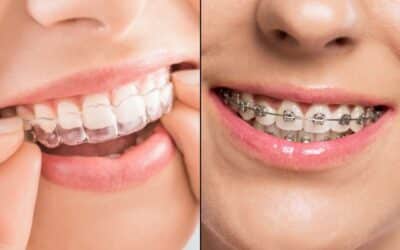Dental implants have revolutionized modern dentistry by offering a permanent, natural-looking solution for missing teeth. Unlike dentures or bridges, implants integrate with the jawbone to provide unparalleled stability and function. However, while the benefits of dental implants are clear, many patients are concerned about the recovery process.
Recovery from dental implant surgery is an essential part of ensuring long-term success. The healing process varies depending on several factors, including the patient’s overall health, the number of implants placed, and whether additional procedures like bone grafting were required. Understanding what to expect at each stage of recovery can help patients feel more comfortable and prepared for their journey to a restored smile.
Understanding the Dental Implant Procedure
Before discussing the recovery process, it’s important to understand how dental implants work. The procedure typically involves multiple stages:
- Initial Consultation – The dentist evaluates the patient’s oral health, takes X-rays, and determines if they are a candidate for implants.
- Tooth Extraction (if needed) – If the patient has a damaged tooth that needs replacement, it may be extracted before the implant is placed.
- Bone Grafting (if necessary) – Some patients require bone grafting to strengthen the jawbone before implant placement. This can extend the recovery process.
- Implant Placement – A titanium post is surgically inserted into the jawbone to act as the artificial tooth root.
- Healing and Osseointegration – Over the next several months, the implant fuses with the jawbone in a process called osseointegration.
- Abutment and Crown Placement – Once healed, an abutment is attached to the implant, followed by the final dental crown.
Each step plays a crucial role in the success of the implant, but the recovery phase is particularly important to ensure proper healing.
What to Expect Immediately After Surgery
The first 24 to 72 hours after surgery are the most critical for healing. Patients may experience common post-operative symptoms, including:
- Mild to Moderate Pain – Some discomfort is normal, but it can be managed with prescribed pain medication or over-the-counter pain relievers like ibuprofen.
- Swelling – The area around the implant site may swell, peaking within the first 48 hours before gradually subsiding. Applying an ice pack for 15-minute intervals can help reduce swelling.
- Minor Bleeding – Some bleeding or oozing from the implant site is normal in the first few hours. Patients should bite down on gauze to control it.
- Restricted Eating – A soft diet is recommended to avoid placing pressure on the implant site. Foods like yogurt, smoothies, mashed potatoes, and soup are ideal.
Patients should rest and avoid strenuous activities for at least 48 hours to promote proper healing. Drinking alcohol and smoking should also be avoided, as they can slow the healing process and increase the risk of complications.
The First Week of Recovery
During the first week, patients will start to notice improvements, but proper post-operative care remains essential to prevent infections and promote healing.
Managing Pain and Swelling
By the third or fourth day, pain and swelling should start to decrease. Patients should:
- Continue using prescribed or over-the-counter pain relievers as needed.
- Sleep with their head elevated to reduce swelling.
- Avoid touching the surgical site with their tongue or fingers to prevent irritation.
Oral Hygiene and Preventing Infection
Oral hygiene is crucial, but brushing the surgical site directly should be avoided for the first few days. Instead, patients should:
- Use an antimicrobial mouth rinse as directed by their dentist.
- Brush and floss other areas of the mouth carefully to prevent bacteria buildup.
- Avoid using mouthwashes that contain alcohol, as they can cause irritation.
Adjusting to Temporary Dietary Restrictions
Patients should continue eating soft foods and gradually introduce firmer foods as healing progresses. Chewing on the opposite side of the mouth is recommended. Hard, crunchy, or spicy foods should still be avoided, as they can cause discomfort or disrupt the healing process.
Two to Four Weeks Post-Surgery
By the second week, most patients experience significant improvements. The swelling should have subsided, and the implant site should be less sensitive. However, the implant still requires time to fully integrate with the jawbone.
Returning to Normal Activities
Patients can resume normal daily activities, including work, light exercise, and social outings. However, high-impact physical activities like weightlifting, running, or contact sports should be avoided for at least a month, as excessive movement can delay healing.
Oral Care Routine Adjustments
Brushing can now be resumed near the implant site using a soft-bristled toothbrush. Flossing should be done with care to avoid disturbing the healing area. Some patients find that using a water flosser helps clean around the implant without irritating the gums.
Dietary Considerations
While soft foods are still recommended, patients can begin incorporating slightly firmer foods such as scrambled eggs, soft pasta, and well-cooked vegetables. It’s still important to avoid biting directly on the implant site.
Three to Six Months: The Osseointegration Phase
The most critical stage of recovery is osseointegration, where the titanium post fuses with the jawbone. This process typically takes three to six months. During this period:
- The implant gradually becomes a permanent part of the jawbone.
- The gums continue healing around the implant site.
- Patients must attend regular dental checkups to monitor progress.
While patients may feel fully healed, this phase is vital for the long-term success of the implant. Rushing the process or placing stress on the implant too soon can lead to implant failure.
Final Steps: Abutment and Crown Placement
Once the implant has successfully fused with the jawbone, the final steps of the treatment begin. The dentist will attach an abutment, which serves as a connector between the implant and the dental crown. After the gums heal around the abutment, a custom-made dental crown is placed on top, completing the process.
At this stage, patients can finally enjoy a fully restored smile with a durable, natural-looking tooth replacement.
Long-Term Care for Dental Implants
Once fully healed, dental implants require ongoing care to ensure their longevity. Here are some essential long-term care tips:
Maintaining Proper Oral Hygiene
- Brush at least twice a day with a soft-bristled toothbrush and non-abrasive toothpaste.
- Floss daily, using a floss threader or water flosser if necessary.
- Schedule regular dental checkups every six months for professional cleanings.
Avoiding Harmful Habits
- Refrain from chewing on hard objects like ice, pens, or fingernails.
- If you grind your teeth at night, consider using a nightguard to protect the implant.
- Limit consumption of sticky or sugary foods that can contribute to gum disease.
Monitoring for Potential Issues
While dental implants have a high success rate, complications such as gum recession, infection, or implant loosening can occur. Patients should report any discomfort, swelling, or changes in their bite to their dentist immediately.
When to Call Your Dentist
Patients should seek immediate dental attention if they experience:
- Persistent or severe pain beyond the first week.
- Swelling that worsens instead of improving.
- Excessive bleeding or pus around the implant site.
- A loose or shifting implant.
Early detection of any issues can help prevent more serious complications and ensure the longevity of the implant.
Conclusion
The recovery process after getting dental implants is a gradual journey that requires patience, proper care, and adherence to post-operative instructions. While the first few days may involve some discomfort, following your dentist’s guidelines, maintaining good oral hygiene, and attending regular checkups will help ensure the long-term success of your implant.
If you’re considering dental implants, choosing a trusted and experienced provider is crucial for achieving the best results. At Dental Implants Orange County, we specialize in high-quality implant procedures designed to restore your smile with long-lasting and natural-looking results. Our team is committed to guiding you through every step of the process, from initial consultation to post-surgery care, ensuring a smooth recovery and a confident smile.
Contact Dental Implants Orange County today to schedule a consultation and take the first step toward a healthier, more beautiful smile!




